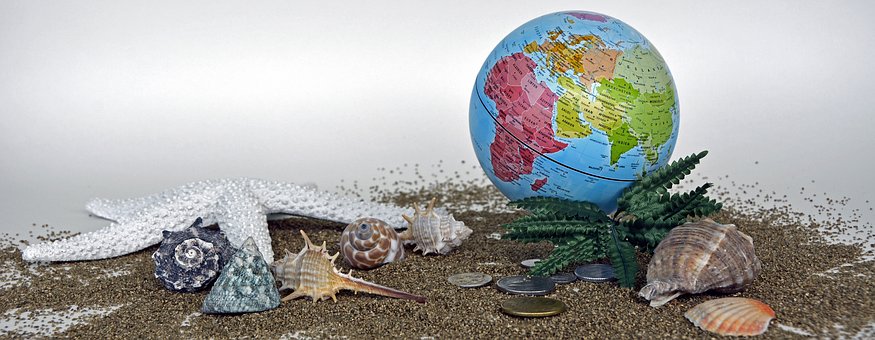Why Plastic is Necessary!
Can you imagine the world without plastic?
Where do I begin? What if there were no plastics at all. Would that reduce carbon emissions, and at what expense? Gas and electric powered vehicles would still be on the roads, but they wouldn’t be as safe. Why not? Many reasons.
- Windshields - protective plastic layer for safety
- Dashboards - replaced steel for safety
- Airbags – made of nylon for strength and safety
- Panels and Bumpers - made of plastic for fuel savings and safety
- Windshield Wiper Blades - made of silicone for durability and resistance to UV
- Hoses, lines, fuel injectors, wire insulation - made of plastic for durability, weight, and safety
- Seatbelts - made of polyester for strength and safety
Just to name a few.
To the naked eye a windshield appears to be a sheet of glass. Did you know all windshields are composed of three layers? The inner layer is constructed of poly-vinyl butyral (PVB), a plastic, and it is sandwiched on either side by clear tempered glass.
This design serves a very specific purpose. First, in case of a catastrophic event, the PVB layer is bonded to the glass which minimizes the amount of shattered glass that could impact any passengers. In addition, when small objects such as rocks strike the windshield, it may chip or crack the glass. However, because of the inner PVB layer, the damage is limited to the outside layer of the windshield. Imagine how dangerous driving would be if every rock or piece of debris flung toward the windshield could shatter the glass at 70 mph. Aside from being dangerous, car owners would be replacing an inferior product. The current shatterproof, layered design prevents these problems. The glass still needs to be repaired or replaced from time to time, but this innovation provides much safer and durable glass for our vehicles.
Initially, manufacturers used wood, and later metal, as standard dashboard material. Nowadays, plastics are used as the primary car dashboard material due to advantages, primarily related to safety. Dashboards are made from soft flexible plastic that covers an inner foam core (also plastic) to aid in impact absorption during a crash. In addition, dashboards offer a better strength-to-weight ratio (improved fuel economy), moldability, longevity, low cost, appearance, wear, and scratch resistance.
What about food? Let’s start with fast food restaurants. How many times in the last month did you get take-out? In the last week? Did you get a coffee with a stir stick? A soda with a straw? Don’t forget the utensils!
Maybe take-out isn’t your thing, and you went to a restaurant. Were your eyes bigger than your stomach, or the typical American serving is too large and you ended up with half a plate of pasta to take home? You might get a tin bottom with a plastic top or maybe a Styrofoam container. Oh, and they typically wrap it in plastic. And put it in a plastic bag. Maybe you are more environmentally savvy, and you carry your own reusable containers with you or maybe you forget them. Do you keep your reusable shopping bags with you, or did you forget those too? Do you carry re-usable utensils and a reusable straw with you? Is that a sanitary option or do you find yourself washing them again and using more hot water and soap to do so?
In the spring planting season, how many bags of mulch do you buy? What about flowers or shrubs in disposable plastic pots?
Is personal hygiene important to you? Shampoo bottles, toothpaste, toothbrush, some Q-tips, feminine hygiene products, razor blade and razor blade handle. All plastic.
Is connectivity and communication important to you? Your computer, the keyboard you’re typing on, and that cell phone that is a lifeline, especially should there be an emergency! All plastic.
Single-use life-saving medical devices such as blood bags, pill bottles, I.V. lines, syringes, face-shields, catheters, and lancets are all made from plastic.
Most, if not all, of these items mentioned could be made from an alternative material. Are any of those alternatives more sustainable than plastics? If they are more sustainable, what is the cost required to transport them from one location to another? How much energy is required to convert them from their raw material (aluminum or glass) into a finished good. How much energy is required to transport them for recycling or to recycle them?
There are great reasons why plastics have flourished. They are adaptable, lightweight, resilient, energy efficient and even sustainable. Much more to come with content related to sustainability in plastics as we continue our series.
The point is that plastics are ubiquitous. Our world has developed mass production of plastic products in a little over 100 years and we’ve become dependent on these products. This dependency comes with a two-edged sword because we are only beginning to face up to the reality that it can also be harming us. It’s to this point that I say, "hold on there". There’s no reason to think doomsday. We’re smart enough to create plastic; we’re smart enough to manage it.
How do we manage plastics? The main point to remind ourselves is that typically there is not one easy solution to any problem. This will require many solutions, with many partners involved and even many more participants throughout the world.
Right now, perception is reality. Plastics is currently a scapegoat for much bigger issues. Plastics are not without their problems and the plastics industry needs to accept some of the blame. It’s easy to blame plastics, but we must be careful what we wish for. Are the alternatives any better, or are we just trading one set of problems for another?
As our series continues, we will provide you with honest information about the good and bad side of plastics and their alternatives. There are many, already viable solutions for plastics and plastic waste that are currently being scaled around the U.S. and the world. We will provide you with promising solutions for plastic waste utilizing both mechanical and molecular recycling. We will educate you about compostable plastic products options. We will show you materials that perform like plastics that don’t contain any plastics whatsoever. We will show how many of the existing plastics we all use on a daily basis, that are currently viewed as pariahs, can be made from both renewable and sustainable resources.
All of this leads us back to our original question. Is a world without plastics possible? Of course not! We are too dependent on plastics in our daily lives. Should the question instead be “How do we make a better world with plastics? We need to work together to ensure a better world for tomorrow without looking for a solution through only one perspective. The solution begins with us.
How a Windshield is Made - Glass, Manufacture, Sizes (carwindshields.info)

